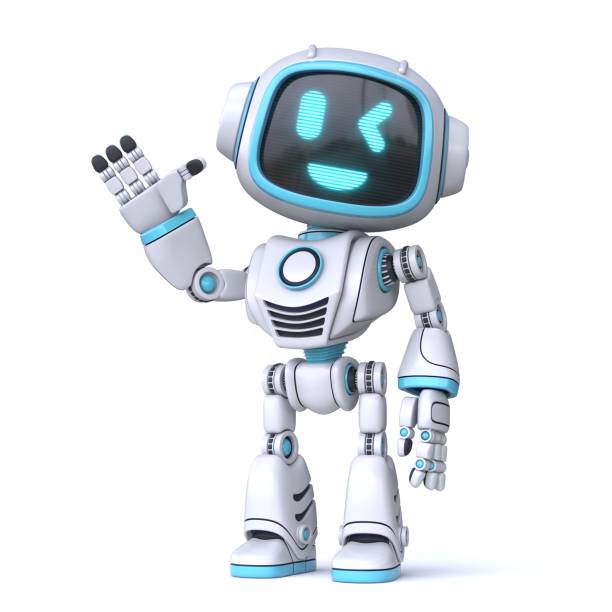Introduction to AI Robotics: Revolutionizing Automation
In today’s world, artificial intelligence (AI) and robotics are merging at an astonishing pace, bringing about transformative changes across various industries. This fusion, known as AI robotics, is creating intelligent machines capable of performing tasks autonomously, often with high precision and efficiency. From manufacturing floors to hospitals, AI-powered robots are revolutionizing automation and redefining what’s possible in terms of productivity, safety, and innovation.
What is AI Robotics?
AI robotics refers to the integration of artificial intelligence with robotics to enable robots to perform tasks that would typically require human intelligence. Unlike traditional robots, which are programmed to follow a set of predefined instructions, AI robots can learn from their environment, make decisions, and adapt to new situations without human intervention.
AI is the core technology behind making robots “smart.” It encompasses various techniques such as machine learning, computer vision, natural language processing, and more, which allow robots to perceive their environment, understand complex tasks, and make real-time decisions.
A Brief History of AI and Robotics
Robotics as a field has existed for decades, but it wasn’t until the late 20th century that AI began to play a significant role in robotics. Early robots were typically simple machines designed for repetitive tasks such as assembling car parts. These robots, known as industrial robots, lacked the ability to “think” or adjust their actions based on external factors.
However, advancements in AI, particularly machine learning and computer vision, have allowed robots to move beyond repetitive tasks and enter fields requiring more complexity. In the 21st century, robots can now perform surgeries, deliver goods, assist the elderly, and even engage in creative tasks like painting or composing music.
Key Technologies Behind AI Robotics
Several key technologies are driving the development and success of AI robotics:
- Machine Learning (ML): Machine learning allows robots to analyze data, recognize patterns, and improve performance over time. It enables robots to “learn” from experience, making them more efficient in their tasks. For instance, an AI-powered robot may become better at identifying defects in a product after processing thousands of images.
- Computer Vision: This technology allows robots to interpret visual information from the world around them. Through cameras and sensors, AI robots can “see” their surroundings, identify objects, and make decisions based on visual data. This is especially important for tasks such as navigation, object manipulation, and quality control in manufacturing.
- Natural Language Processing (NLP): NLP enables robots to understand and communicate with humans using natural language. This is crucial in applications like customer service robots, where human-robot interaction is based on voice commands or written text.
- Sensors and Actuators: AI robots rely on various sensors (such as touch, proximity, and temperature sensors) to gather information about their environment. Actuators then convert this data into physical movements, allowing the robot to interact with the world.
Applications of AI Robotics
The applications of AI robotics are vast, with the technology being used in numerous industries to automate tasks, increase productivity, and improve safety. Some of the most notable applications include:
- Manufacturing: AI robots have been widely used in industrial automation for decades. They are particularly useful in assembly lines, where they can handle tasks such as welding, painting, and packaging with high precision and speed. AI-enhanced robots can also perform predictive maintenance, identifying potential issues before they result in machine failures.
- Healthcare: AI robotics is revolutionizing healthcare by assisting with surgeries, providing rehabilitation support, and helping to care for elderly patients. Surgical robots, such as the Da Vinci Surgical System, are capable of performing complex procedures with minimal human intervention, often resulting in shorter recovery times and fewer complications.
- Logistics and Delivery: Autonomous robots are transforming logistics and supply chain management. AI-powered robots are used in warehouses to sort, package, and move goods more efficiently. In delivery, autonomous drones and self-driving vehicles are being tested and deployed to transport goods directly to customers, reducing delivery times and costs.
- Service and Assistance: AI robots are also becoming increasingly common in public service roles. Robots like Pepper are used in retail settings to interact with customers, answer questions, and provide information. Similarly, AI-powered robots are used in elderly care homes to assist with basic tasks such as medication reminders, companionship, and mobility assistance.
The Future of AI Robotics
The future of AI robotics is incredibly promising, with ongoing research and development continuously pushing the boundaries of what robots can do. As AI continues to evolve, we can expect robots to become more intelligent, versatile, and capable of performing even more complex tasks.
One key area of growth is human-robot collaboration. Future robots are likely to work alongside humans in a more integrated and cooperative manner, enhancing the capabilities of the workforce rather than replacing it. This will lead to new possibilities in industries ranging from education to entertainment.
Moreover, advancements in AI will make robots even more autonomous, allowing them to work in more unpredictable and dynamic environments. Autonomous robots may be deployed in sectors like disaster response, space exploration, and environmental monitoring, where they can navigate complex, hazardous situations to assist humans in tasks that would be too dangerous or time-consuming for people.
Conclusion
AI robotics is reshaping the landscape of automation, offering solutions that increase productivity, reduce human error, and open up new possibilities across industries. By combining the precision of robotics with the learning and decision-making capabilities of AI, we are witnessing the dawn of a new era in automation. While challenges remain, particularly in terms of ethics, safety, and job displacement, the potential benefits of AI robotics are undeniable. As technology continues to advance, we are on the verge of a future where AI robots play an even greater role in improving quality of life and driving innovation.

